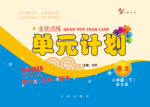题目内容
【题目】 Modern agriculture and its ability to feed billions of people may be among humanity’s greatest successes. However, it comes with hidden costs. For example, have you ever considered how much water is needed to provide you with a steak or a salad? It may surprise you.
In a recent study published in the journal Nutrients, scientists from the Commonwealth Scientific and Industrial Research Organization(CSIRO), Australia's national science organization, took a close look at the diets of 9,341 adult Australians—specifically, their “water-scarcity footprints(水消耗足迹)”.
It turned out that a sweet tooth not only adds to our waistlines(腰围) but also stresses our water resources. The water-scarcity footprint is a widely recognized measurement of water consumption. First, it counts the liters of water you used. Then, it looks at the place where the water was used. The more lacking water is in your area, the larger your water-scarcity footprint.
The scientists found that the average Australian's diet had a water-scarcity footprint of 362 liters per day. Snacks—cookies, cakes and alcohol—accounted for 25 percent of the water-scarcity footprint. The research also included a glass of wine(41 liters), a single serving of potato chips(23 liters), and a small bar of milk chocolate(21 liters).
Not surprisingly, cutting out snacks would be the N0.1 priority if you wanted to lower your own water-scarcity footprint.
Earth's surface is 70 percent water, but only 2.5 percent of that can be used for drinking or farming. By 2030, a world of about 8.6 billion people will need 35 percent more water, 40 percent more energy, and 50 percent more food, according to the United States National Intelligence Council. So, we need to watch what we eat, not just for our personal health but for the health of our societies.
【1】What did the recent study closely focus on?
A.Modern agriculture.B.Average Australians.
C.Water resources.D.Water-scarcity footprints.
【2】What did scientists from CSIRO find in their study?
A.Sweet teeth lead to thin waistlines.
B.Australians' diets are mainly made up of snacks.
C.The water-scarcity fooprint is a measurement of saving water.
D.Lacking water in our area means a larger water-scarcity footprint.
【3】What does the underlined part “the N0.1 priority” in Paragraph 5 probably mean?
A.the least important thingB.the least impossible thing
C.something to be done firstD.something to be prevented first
【4】What does the last paragraph intend to tell us?
A.Take care of our diets.B.Protect our drinking water.
C.Make good use of energy.D.Produce more healthy food.
【答案】
【1】D
【2】D
【3】C
【4】A
【解析】
这是一篇说明文。文章主要讲了现代农业虽然养活数十亿人,但是它也带来了隐藏的成本。水消耗足迹是一种被广泛认可的衡量水消耗的指标,一项关注于水消耗足迹的研究表明,你所在的地区缺水越严重,你的水消耗足迹就越大。且饼干、蛋糕和酒精等零食造成了25%的水消耗足迹。因此我们应该注意我们的饮食。
【1】细节理解题。根据第二段In a recent study published in the journal Nutrients, scientists from the Commonwealth Scientific and Industrial Research Organization(CSIRO), Australia's national science organization, took a close look at the diets of 9,341 adult Australians—specifically, their “water-scarcity footprints(水消耗足迹)”.可知澳大利亚国家科学组织联邦科学与工业研究组织的科学家最近在《营养》杂志上发表了一项研究,他们仔细研究了9341名澳大利亚成年人的饮食——特别是他们的“水消耗足迹”。由此可知,最近的研究关注的是水消耗足迹。故选D。
【2】细节理解题。根据第三段中The more lacking water is in your area, the larger your water-scarcity footprint.可知你所在的地区缺水越严重,你的水消耗足迹就越大。由此可知,CSIRO的科学家在他们的研究中发现了所在地区缺水意味着更大的水消耗足迹。故选D。
【3】词义猜测题。根据第四段中Snacks—cookies, cakes and alcohol—accounted for 25 percent of the water-scarcity footprint. The research also included a glass of wine(41 liters), a single serving of potato chips(23 liters), and a small bar of milk chocolate(21 liters).可知饼干、蛋糕和酒精等零食造成了25%的缺水足迹。研究还包括一杯葡萄酒(41升),一份薯片(23升)和一小块牛奶巧克力(21升)。由此可知,如果你想降低自己的水消耗足迹,减少零食将是首先要做的事情。故划线短语“the N0.1 priority”意思为“首先要做的事情”。故选C。
【4】推理判断题。根据最后一段中So, we need to watch what we eat, not just for our personal health but for the health of our societies.可知所以,我们需要注意我们吃什么,不仅是为了我们个人的健康,也是为了我们整个社会的健康。由此可推知,最后一段想告诉我们注意我们的饮食。故选A。

 全优点练单元计划系列答案
全优点练单元计划系列答案